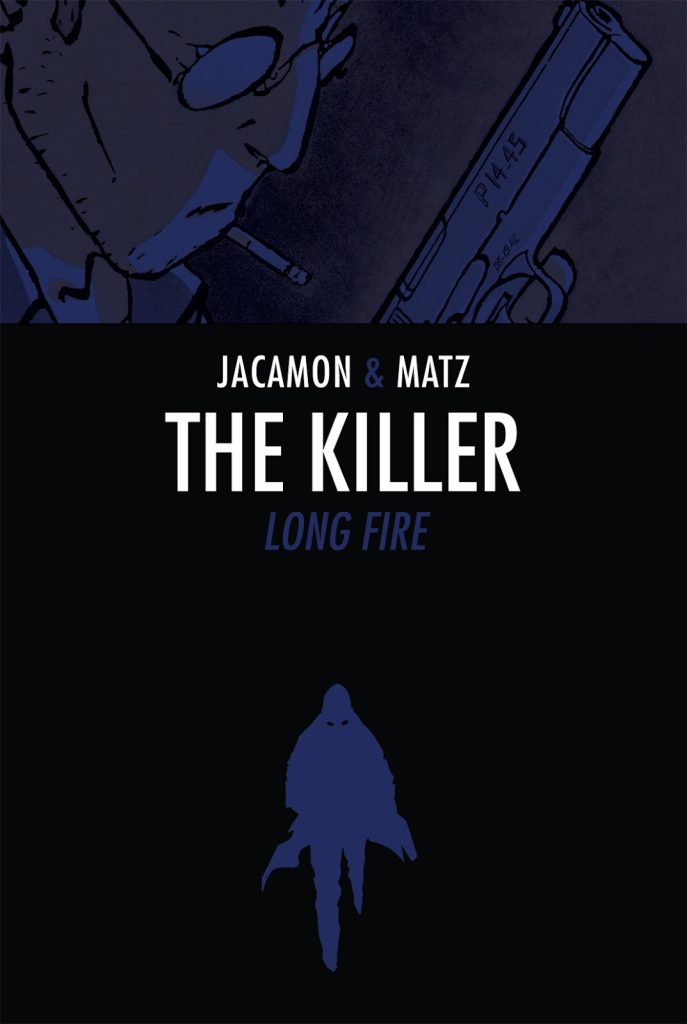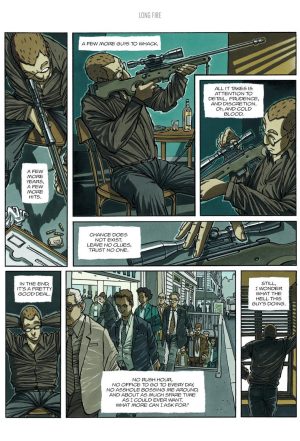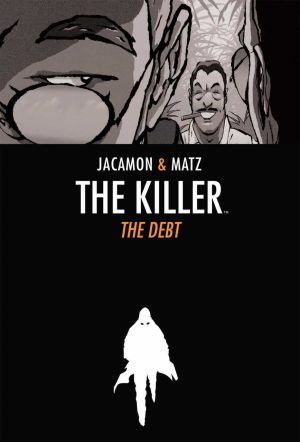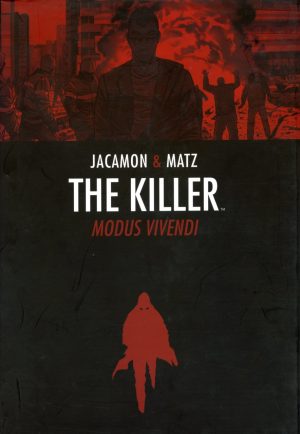Review by Frank Plowright
Over a terse opening dozen pages Matz (Alexis Nolent) and Luc Jacamon introduce us to the Killer as he lays out his trade, ethical values, preparations and hopes for the future. It’s an unusually introspective way into a noir thriller, the explanations carried out as the Killer waits for his next target, playing the long game. It’s intended to be shocking and is, the calm rationalisation of a completely unpalatable trade explained in a succession of narrative captions by someone never named who sets himself above the herd.
It’s absolutely chilling, and continues for almost two-thirds of Long Fire, although interspersed with violent interludes as the Killer recalls previous contracts, how he started his career, and the few occasions that went wrong. Heightening the chills is Luc Jacamon’s illustrations showing a nondesript man going about everyday business, except never too far from his rifle.
When a change of scenery occurs for the final third, it’s already been established that the killer has a bolt hole in a remote area of Venezuela. Unleashed from the discipline of the ordinary, Jacamon really flourishes, with pages of native predators amid their gloriously rich surroundings, dips into history to consider rebellious conquistador Lope de Aguirre and people who have greater character. That’s no condemnation of his leading player, who’s intended to seem ordinary, a man who doesn’t stand out in a crowd. There are also moments when the Killer’s rationality peels away, illustrated by Jacamon as if a digital image that’s not properly aligned after transfer, while another interesting technique involves a blurring effect representing fading memory.
An abrupt change of location and tone begins the closing chapter. A decision has been made, and it seems as if action will be taken, but Matz cleverly brings matters around full circle to the same type of introspection and explanations that opened the book.
The consideration of a killer is hardly new in fictional terms, but Marz and Jacamon turn in a very stylish version of the theme, straightforward, yet with underlying complexities, and a ruthless protagonist. A question hanging over the closure is whether the Killer is cracking up, and that’s picked up in Vol. 2 (earlier released as The Debt), or they’re combined as the first Killer Omnibus, and also found with other content in The Complete The Killer.





